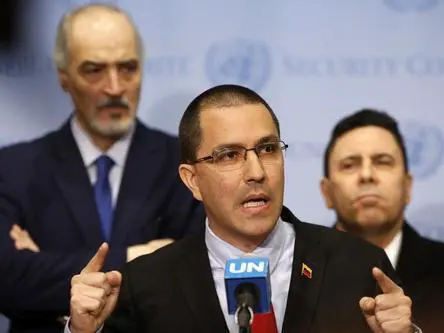Federal Reserve Chairman Jerome Powell and the incoming chief of the New York Fed on Friday stuck closely to a unified script on the economic outlook, in separate appearances sketching a picture of gradual interest-rate hikes ahead.
But as global stocks fell on jitters over escalating US-China trade tensions, Powell merely said it was too soon to know if the trade issue would take a toll on the US economy, which has been steadily strengthening.
For his part, San Francisco Fed President John Williams, whose appointment to head the Fed’s New York branch means he will also be vice chair of the Fed’s policy-setting committee and a permanent voter on the committee, did not mince words.
Williams said that although the rhetoric on tariffs so far has been more extreme than the actions taken, he loses sleep over the prospect of an actual trade war, which he warned could result in slower growth, an inflationary spike and lower productivity.
“My concern here is not who loses more or what happens specifically. It’s that if this path goes to one where all of us are pulling away from being open, I think those implications are negative,” Williams told reporters, after a speech here. Still, he said, “I haven’t seen that kind of change yet.”
The remarks by the two came as the United States and China exchanged new threats on the trade front. China warned on Friday it was fully prepared to respond with a “fierce counter strike” of fresh measures if the United States follows through on President Donald Trump’s threat to slap tariffs on an additional 100 billion dollars of Chinese goods.
Williams downplayed the leverage that some believe China’s vast holdings of US debt give it in trade negotiations, saying he believes it is unlikely China would dump US Treasuries and would do itself great damage if it did.
China as of the end of January held around 1.7 trillion dollars of Treasuries, making it the No. 2 overall owner of US government bonds after the Federal Reserve.
But Williams said some sectors of the US economy, such as farming, are particularly vulnerable if proposed tariffs on crops like soybeans go into effect. Soybeans are the top US agricultural export to China.
“It’s definitely something we are paying close attention to,” he said. “The global economy is built on trading with each other, and if we were to try to unwind all of that it would be extremely disruptive and very costly, both for the US and the world.”
Close to full employment
Powell, in his first speech on the economic outlook since assuming the helm at the US central bank in early February, said the labor market appeared close to full employment and that inflation was poised to rise toward the Fed’s 2 percent objective in the coming months.
“As long as the economy continues broadly on its current path, further gradual increases in the federal funds rate will best promote these goals,” Powell said at an event in Chicago.
Powell said the risks to the US economic outlook appeared “roughly balanced.”
Earlier on Friday the Labor Department reported the unemployment rate held steady at 4.1 percent for a sixth straight month in March as 103,000 jobs were created, the lowest amount in six months.
The Fed has been slowly raising interest rates since 2015, most recently in March when policymakers signaled they expected to increase borrowing costs two or three more times in 2018. Prices for interest rate futures have suggested that investors expect the Fed to do just that.
Williams’ comments on the economy were similarly rosy, and he suggested he supports continued gradual rate hikes through 2020, by which time rates should be around 3.5 percent.
(REUTERS)
 简体中文
简体中文

